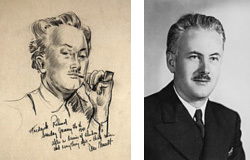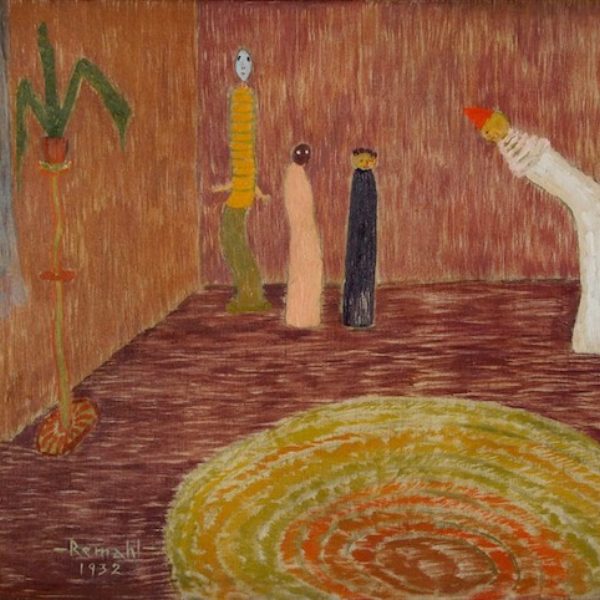
Frederick Remahl
b. 1901, Hamburgsund, Bohuslan, Sweden - d. 1968, Claiborne, MD
Frederick Remahl was born on June 16, 1901, on a small island along the coast of Sweden, Snesholmen Island. Remahl later described memories of his childhood there, “among the seaweeds, sea shells, and driftwood—endlessly sailing and rowing small boats.” He came to the United States in 1916, settling in Two Harbors, Minnesota, and studied at the Minneapolis School of Arts for four years before moving to Chicago in 1923. There, he socialized at the bohemian nightspot, the Dill Pickle Club, with fellow artists, actors, writers, and other radicals. He went back and forth to Minneapolis, living there in 1930 and 1931 before returning to Chicago in 1932. He studied with Anthony Angarola and joined the Chicago Society of Artists, situating himself within a group of artists who shared an interest in surrealism. He was offered his first project for the Works Progress Administration in 1937, and completed a suite of twelve murals for the Chicago Board of Trade, as well as for the Cook County Hospital and Chicago Public Schools. Remahl and his wife opened Remahl’s Little Gallery and Frame Shop at 3962 North Clark Street in 1947. It seems that he also owned an art supply store at 6140 North Clark Street, which was said to be a gathering place for people interested in art.
While Remahl’s drawings and sketches in watercolor typically capture his observations more naturalistically, his paintings often show an interior point of view, which allowed him to explore and blend reality with fantasy and dreams. For instance, Landscape with Dock and Boater, 1924, showcases both the appreciation of nature that began in his youth and the importance of color and abstraction in his work—with its large, flat color shapes, fragmented composition, and almost childlike simplicity. Two Women Two Tall Figures, 1932 depicts three toy-like figures bending as if in conversation in a domestic interior setting. Foundations for the Future, 1948, also draws on his ongoing preoccupation with nature, as two stick figures seem to emerge or sprout out of the ground. These two later works are also fanciful examples of Remahl's tendency to draw on Swedish fairy tales and other imaginations for his artistic endeavors.
To be closer to their daughter Peggy, Remahl and his wife moved to Claiborne, Maryland in 1965. In his retirement, Remahl sailed the South River in a small boat. He died in 1968.
Lisa Meyerowitz
References
Frederick Remahl: When Smoke Goes Down. SGTV 2010, accessed at
http://www.sullivangoss.com/Exhibits/SGTV_REMAHL/
Jacobson, J. Z. Art of Today: Chicago 1933. Chicago: L. M. Stein, 1932.
Remahl, Frederick. Pamphlet file, P 18796. Ryerson Library. Art Institute of Chicago.
Artist Images: AT LEFT: Sketch of Frederick Remahl / Don Mundt (dated January 26, 1941).
AT RIGHT: Photo of Frederick Remahl / photographer unidentified. Courtesy of Daniel Remahl.

